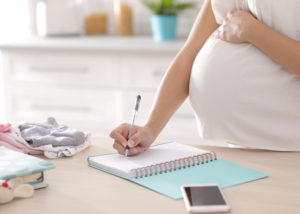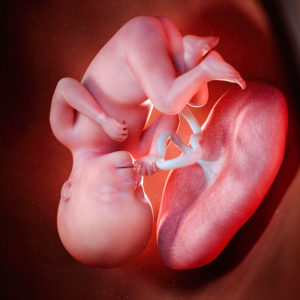 Exercise is the best way to help your body cope with the physical changes during pregnancy. Even if you did not exercise before you were pregnant, it’s a great time to start. Experts recommend 30 minutes of moderate-intensity exercise at least five days a week. This recommendation is actually the same for all adult women. However, exercise during pregnancy is especially important because it can reduce back pain and ease constipation, bloating, and swelling. Regular exercise also boosts your mood and energy, while helping you sleep better. If that’s not enough, it will also help your body prepare for labor and ward off excess baby weight.
Exercise is the best way to help your body cope with the physical changes during pregnancy. Even if you did not exercise before you were pregnant, it’s a great time to start. Experts recommend 30 minutes of moderate-intensity exercise at least five days a week. This recommendation is actually the same for all adult women. However, exercise during pregnancy is especially important because it can reduce back pain and ease constipation, bloating, and swelling. Regular exercise also boosts your mood and energy, while helping you sleep better. If that’s not enough, it will also help your body prepare for labor and ward off excess baby weight.
First Trimester
- Walking is the easiest way to get active. You can get started right away—all you need is a decent pair of sneakers. A moderate pace of about 1 mile every 20 minutes will raise your heart rate, without putting too much strain on muscles and joints.
- Yoga is another exercise that needs minimal equipment—all you need is comfortable clothes and a gym mat. Through a combination of stretching, aerobic-type exercises, and deep breathing, yoga will tone your body, while also resetting your mind and reducing overall stress.
- Water aerobics requires a pool or gym membership, but it’s a great way to get active because it’s low impact. Swimming classes are especially gentle on joints, legs, and ankles.
- Jogging and running are goods way to get your blood pumping, but they should be reserved for experienced athletes. Pregnancy is not a good time to start running for the first time.
- Strength training helps build muscles in your arms to prepare for carrying the baby around. When pregnant it’s advised to avoid excessive weight and exercises where you are lying on your back.
- Low-Impact Aerobics are still okay in your first trimester, but can be more straining than other options. If you are already active with aerobics, it’s safe to keep it up as long as you are being careful. It’s always best to choose aerobics classes or videos geared toward pregnant women.
Second Trimester
While you may need to adjust your habits based on your changing body, there is no reason to cut back on exercising during your second trimester. In fact, it’s highly recommended to continue getting 30 minutes of moderate exercise each day.
Even more so than the first trimester, choose low impact exercises such as walking, yoga, and swimming. Yoga is still a great exercise to help reduce stress, calm your mind, and strengthen your body. However, in the second trimester, it’s best to avoid yoga poses where you are lying on your back for more than a moment or two because the weight of your enlarging uterus could compress major blood vessels and restrict circulation to you and your baby. Motionless standing, like tree pose, should be avoided as it can restrict blood flow.
Third Trimester
For the final trimester, you should focus solely on low-impact, easy exercises. Keep up your routines and continue doing what has felt good during your pregnancy so far. Walking, yoga, and water aerobics are great exercises for your third trimester.
Intense strength training such as ab workouts, push-ups and planks should be avoided. It’s also best to avoid exercises where your balance is challenged by using only one leg at a time.
Takeaway
Before you begin any exercise regimen while pregnant, talk to your OBGYN. They can help you build an ideal fitness plan based on your current fitness levels, and any possible unique risk factors.
More

With many women opting for careers and stable relationships before starting a family, the average maternal age of first time mothers is on the rise. In fact, according to the CDC, around 9% of new mothers are over 35 years old. While the odds of conceiving drop with age, it’s still very possible to have children past 35.
Advanced maternal age generally refers to women 35 and older. Essentially women over 35 will face more risks and complications, including the following.
- Time to conceive: Because egg quality and quantity decreases with age, it often takes six to 12 months for women of advanced maternal age to get pregnant.
- Multiple pregnancy: Due to hormonal changes for older women, the body is more likely to release multiple eggs, leading to twins.
- Pregnancy conditions: In addition to issues conceiving, pregnancies risks include high blood pressure and gestational diabetes. Both conditions can lead to complications during pregnancy and during delivery, if left untreated.
- Chromosome abnormalities: Women over 35 will have a higher risk of chromosome issues such as Down syndrome.
- Pregnancy loss: The risks of miscarriages and stillbirths also increase for mothers with age. All of the above issues (egg quality, chromosome abnormalities, high blood pressure, and diabetes) can increase the risk of miscarriage.
While all of these risks are real and possible, many women have safe and healthy pregnancies after 35. The first step is always going to be diet and exercise. Get your diet in check with a focus on fruits, vegetables, lean protein, and whole grains. Aim to eat clean as much as possible, which refers to eating actual ingredients rather than pre-made foods. Find some quick and easy recipes that use real ingredients.
Exercise is also so important. Get moving! Almost anyone can take a 30-minute walk per day. It’s easy and available to most people’s current health condition. Walking is the most basic way to get moving, as it eliminates any excuse to skip exercising that day. Other ways to get in shape include swimming, aerobics, yoga, cycling, and circuit training. If you are new to working out, start by walking and work up from there.
It’s also imperative to severely limit or avoid alcohol and tobacco when preparing to conceive. While caffeine is okay, limiting the amount of caffeine is also a wise move.
In addition to diet and exercise, make an appointment to talk with your OBGYN to assess your own plan. Your doctor will discuss options for fertility testing, if and when it’s needed. Your doctor can also discuss DNA screening and testing for chromosomal abnormalities.
The real takeaway is that the best way to prepare for conceiving over 35 is to get healthy through diet and exercise in order to prepare your body.
More
Many women look into bettering their overall health when they plan a pregnancy, but good habits should start with a healthy conception. In addition to regular doctor’s exams and other medical advice, diet and exercise can help with conception and help support a healthy pregnancy.
Exercise
Although heavy or extreme exercise should be avoided during pregnancy, there is nothing to prevent you from preparing your body for a healthy pregnancy. Implementing regular exercise into your schedule will not only help you increase your stamina for labor and delivery, but it can also improve your fertility (especially if have polycystic ovarian syndrome that can lead to trouble conceiving). There is no need to wait until you are pregnant to start exercising, as making it a habit is guaranteed to also help you lose the baby weight faster!
A variety of physical exercises can be done to spice up your routine but remember that during a pregnancy you need your back and abdominal muscles to be stronger in order to help you with the increasing weight in your tummy area, as well as the swelling of your breasts. As such, you may want to focus on exercises that strengthen your core and will eliminate the pain most women experience during pregnancy. It is also suggested that you do cardio to keep your heart rate up and stay in good physical and mental health before, during, and after your pregnancy.
Diet
Diet and exercise go hand in hand, so here are some tips on what foods you can add to your diet to help you support your fertility:
- Eat foods rich in antioxidants, as those have been proven to improve fertility in both men and women. These foods include fruits, vegetables, nuts, and grains.
- Choose a bigger breakfast, which can help both balance your diet and improve the hormonal effects of polycystic ovarian syndrome—a major cause of infertility.
- Add fiber to your diet though fruits and veggies, whole grains, and beans. Fiber generally helps remove excess estrogen, though studies on its exact advantages are not yet conclusive.
- Get your protein from vegetables! Swapping meat protein with veggies has been known to protect against infertility.
In addition to adding those foods, you should avoid the following:
- Minimize trans fats that can be found in processed and fast foods.
- Cut down on caffeine, especially if you drink more than 500 ml in a day. Low to moderate caffeine consumption should not interfere with fertility.
- Reduce refined carbs: sugary foods and drinks, as well as processed grains increase your blood sugar and insulin levels and have been associated with the risk of ovulatory infertility.
- Avoid alcohol, especially during the pregnancy! When you are still trying to get pregnant, moderate amounts of alcohol should not harm your fertility, but excess is to be avoided.
More

Ready to start a family? Understanding and tracking your ovulation is the first and most important step when you are ready to conceive. Ovulation refers to the timing of when the egg is ready to be fertilized after it has been released from the ovary and passed across the fallopian tube.
The majority of women have regular periods, meaning that they come very 24 to 36 days. So, even if the period is not super consistent to the exact day, women with normal cycles usually experience it within a week of when it’s supposed to arrive. Additionally, it’s worth noting, while the length and flow may vary from month-to-month, regular refers to the frequency in which it occurs. Once you establish if your menstruation is regular, you can begin tracking your ovulation to pinpoint a more exact time.
Women with regular periods will have an ovulation cycle that lasts 28 to 32 days. According to American Pregnancy Association, most women ovulate between day 11 and 21 of their cycle.
The following tactics can help you track your ovulation at home with minimal effort.
- Chart your cycle: Whether you prefer to make notes on paper, on your phone’s calendar, or through an app, charting refers to keeping track of the first and last day of each period. It’s helpful to document because it can help you pinpoint the most fertile days with regularity from month to month. Additionally, online menstruation tracking resources and phone apps can suggest your most fertile days once you’ve charted a couple of months.
- Cervical mucus: As your body begins to ovulate the egg, it produces a cervical mucus. For many women, the clear and slippery mucus will be plentiful by the time your body ovulates. The best time to try to conceive is during this window where you are experiencing the release of cervical mucus. One thing to point out, women on the pill typically do not ovulate, so this mucus will seem unusual for women who have recently gone off the pill.
- Basal body temperature: The basal body temperature will rise before a women’s fertile window. To track it, take your body’s temperature around bedtime—when the body is closest to a deep rest. Women are generally most fertile two to three days before their temperature rises, so women with regular periods can chart the rise on a monthly basis to help assess the best window to conceive.
While these simple steps will often work for women with normal periods, a host of outside factors, including stress and anxiety, can lead to irregular menstruation. If you want confirmation beyond your own tracking, ovulation home kit can help pinpoint the best time to conceive.
- Ovulation home kits: In addition to the changes mentioned above, your body releases a hormone called the Luteinizing hormone, which typically surges a couple of days before ovulation. By testing urine, the kit can detect this hormone and therefore pinpoint the most fertile window to conceive.
Trying to conceive can be a stressful time for many couples, but the best way to handle it is to stay healthy by drinking plenty of water, eating lots of fresh fruits, veggies and lean meats, and by performing moderate exercise 150 minutes per week. While scheduling a pre-conception doctor appointment is good, it’s best to try for six months before enlisting a specialist.
More

Many women report changes in their memory during pregnancy. Though memory loss is not reported as a usual symptom that comes about with pregnancy, empirical evidence shows that absent-mindedness among pregnant women is more common than in non-pregnant women.
Also known as “baby brain,” it refers to the changes that occur in cognitive and executive functioning, as well as in memory, due to the increased levels of sex hormones. Some explanations of memory loss attribute it to the elevated anxiety pregnant women experience, seeing as they are preoccupied with a major life change and the responsibility of a new life. Other research points to changes in the brain that prepare women for motherhood.
More specific findings suggest pregnant women experience altered spatial perception and memory, as the heightened hormones may negatively affect the neurons in the hippocampus—the part of the brain responsible for spatial memory.
What to expect?
Undoubtedly, the stress that comes with preparing for the arrival of a baby (or more than one!) is bound to contribute to absent-mindedness and some slight disorientation, especially as far as new surroundings or new information are concerned.
Stress before giving birth is to be expected, as is a decline in good mood. Some women even experience signs of depression during pregnancy, as well as shortly after. In addition to stress and a generally sad mood, these might include:
- Declined interest in fun activities
- Changes in sleep pattern, energy and appetite
- Finding it challenging to concentrate and make decisions
- Feelings of worthlessness or shame
- Questioning life’s worth
How to manage it
Though it is yet unclear whether mild depression or increased hormone levels are causing memory loss in pregnant women, it does seem to dissipate shortly after the baby has been born.
It is advised that if these symptoms persist for a long time after birth, or if you have had a history of depression, you consult your health professional.
Despite the increased anxiety that comes with caring for a newborn, expectant mothers should try to ease their mind and keep their focus sharp to the best of their abilities by engaging in activities that help them feel less stressed.
More

Pregnant women have unique health needs, as the foods they eat are the main source of nutrients for a growing baby. To cultivate healthy eating during pregnancy, it is important for pregnant women to plan in terms of vitamins and minerals and include foods that meet their unique nutritional needs, while limiting or avoiding certain processed foods, meats, and cheeses.
Foods to avoid:
For starters, pregnant women should avoid: refrigerated meat spreads; unpasteurized juices or milk; store-made salads (chicken, egg, tuna); unpasteurized soft cheeses (brie, feta, blue); raw sprouts; raw fish or refrigerated uncooked seafood (sushi, nova-style, lox, kippered, smoked, jerky); processed meats (hot dogs, deli meats); and certain cooked fish (shark, swordfish, king mackerel).
While fish and shellfish provide many important nutrients, such as iron and omega-3 fatty acids, pregnant women should be careful about both the type and frequency of seafood ingestion. The U.S. Department of Health and Human Services Office of Women’s Health recommends the following guidelines:
- Avoid fish high in mercury, such as swordfish, tilefish, king mackerel, and shark
- Eat up to six ounces per week of canned albacore or chunk white tuna
- Eat up to 12 ounces per week of cooked fish and shellfish including shrimp, crab, clams, oysters, scallops, canned light tuna, salmon, pollock, catfish, cod, and tilapia
Healthy foods to eat:
During pregnancy, women need increased levels of folic acid, iron, calcium, vitamin A, vitamin D, and vitamin B12. Specifically, pregnant women need 400 to 800 micrograms (mcg) of folic acid, 27 mg of iron, 1,000 mg of calcium, 770 mcg of vitamin A, 600 international unit (IU) and 2.6 mcg of vitamin B12. While taking supplements may help to reach these nutrient levels, it is preferable to consume vitamins and minerals through foods as certain supplements can contain higher than recommended levels of nutrients, which can be harmful to pregnant women.
To achieve healthy eating during pregnancy, see the list below of suggested foods per nutrient type especially important for pregnant women. This is not an exhaustive list but rather a starting point to help women plan a healthy diet for themselves and their babies.
Folic Acid/Folate
- Whole grains
- Avocados
- Eggs
- Beets
- Asparagus
- Leafy greens
- Legumes (lentils, peas, beans, chickpeas, soybeans, peanuts)
- Citrus fruits
- Brussels sprouts
- Broccoli
- Nuts and seeds
- Bananas
Iron
- Seafood (see specific seafood guidelines for pregnancy above)
- Legumes
- Broccoli
- Dark, leafy greens
- Lean meat
- Quinoa
- Nuts and seeds
- Tofu
- Dark chocolate
Calcium
- Dairy products
- Broccoli
- Dark, leafy greens
- Collard greens
- Soy beans
- Bok choy
- Oranges
- Seafood
- Legumes
Vitamin A
- Sweet potatoes
- Broccoli
- Dark, leafy greens
- Carrots
- Black-eyed peas
- Red bell pepper
- Mango
- Melon
- Apricots
- Tomatoes
- Pumpkin seeds
- Berries
Vitamin D
- Dairy products
- Fish liver oil
- Salmon
- Tuna
*Note: Vitamin D is the hardest nutrient to get solely from foods. A vitamin D supplement is recommended.
Vitamin B12
- Beef
- Chicken
- Seafood
- Dairy products
- Fortified breakfast cereal
- Eggs
More
 According to the American Pregnancy Association, approximately 1 in 2,500 pregnancies experience placenta accreta, increta or percreta. Placenta accrete is a potentially dangerous pregnancy complication in which the placenta grows too deeply into the uterine wall. In the highest risk cases, the placenta grows into the uterine muscles, a condition that is known as placenta increta, or through the uterine wall, known as placenta percreta. Instead of detaching from the uterine wall after childbirth as is typical, in cases of placenta accreta, part or all of the placenta remains attached, which can cause severe blood loss.
According to the American Pregnancy Association, approximately 1 in 2,500 pregnancies experience placenta accreta, increta or percreta. Placenta accrete is a potentially dangerous pregnancy complication in which the placenta grows too deeply into the uterine wall. In the highest risk cases, the placenta grows into the uterine muscles, a condition that is known as placenta increta, or through the uterine wall, known as placenta percreta. Instead of detaching from the uterine wall after childbirth as is typical, in cases of placenta accreta, part or all of the placenta remains attached, which can cause severe blood loss.
The most significant risk factor for placenta accreta is one or more previous cesarean sections (C-sections). According to research by the National Accreta Foundation, 87.6 percent of women have had a repeat C-section, increasing their risk for developing this dangerous complication. If you have had a past C-section and are trying for baby number two (three, four, or more), familiarize yourself with the causes and risks of placenta accreta.
Placenta Accreta Risk Factors
Women with the following factors may be at a higher risk of developing placenta accreta:
- A prior uterine surgery or multiple surgeries that have left scar tissue.
- Multiple past pregnancies, especially if delivered via C-section.
- A placenta that develops lower in the uterus or that wholly or partially covers the cervix (known as placenta previa).
- Age 35 or older.
Symptoms of Placenta Accreta
Before birth, placenta accreta often causes no symptoms, other than in some cases, vaginal bleeding during the third trimester. As a result, the diagnosis, and its potential risks, often come as a surprise to inflicted women. During childbirth, however, placenta accreta may cause:
- Heavy vaginal hemorrhaging post-delivery that could be life-threatening that is caused by disseminated intravascular coagulopathy, a condition that affects the blood’s ability to clot.
- Adult respiratory distress syndrome (lung failure).
- Kidney failure that requires a blood transfusion.
- Premature birth.
Diagnosis and Treatment Options for Placenta Accreta
A doctor can sometimes detect and diagnose placenta accreta during an ultrasound. If diagnosed during your pregnancy, your OBGYN may prescribe a cesarean section delivery followed by a surgical procedure to remove the entire uterus (a hysterectomy).
For More Information
For more information on placenta accreta, or to better understand your risk factors and delivery options, talk to your OBGYN. He or she can help you understand your options to put you and your baby in the best position for a healthy birth.
More
 Thanks to modern day advancements in medicine and technology, safe deliveries of healthy babies are more controllable and possible than ever before. Before the advent of sonograms, the ability to prepare and respond to a baby set to be born breech—in an inverted position with the feet or buttocks set to travel through the birth canal before the head—was often more challenging to diagnose. While identifying breech birth positions in advance of labor is now easier and more accurate, the number of babies who find themselves positioned for a breech birth is still high.
Thanks to modern day advancements in medicine and technology, safe deliveries of healthy babies are more controllable and possible than ever before. Before the advent of sonograms, the ability to prepare and respond to a baby set to be born breech—in an inverted position with the feet or buttocks set to travel through the birth canal before the head—was often more challenging to diagnose. While identifying breech birth positions in advance of labor is now easier and more accurate, the number of babies who find themselves positioned for a breech birth is still high.
What is Breech Delivery?
In an ideal vaginal birth, the baby is positioned with his head in the pelvis and leaves the birth canal head-first. With the head being the widest part of the body, the shoulders and body can more easily pass through the birth canal when they follow the head. In a breech delivery scenario, the baby is situated in an inverse position, with the challenge of needing to leave the birth canal feet or buttocks first. There are three types of breech positions:
- Complete breech: Buttocks point down with legs folded at the knees and feet near the buttocks
- Frank breech: Buttocks aimed at the birth canal with legs sticking straight up in front of the baby’s body and the feet near the head.
- Footling breech: One or both feet are pointed down and in position to deliver before the rest of the body
How Many Women Still Deliver Breech?
Approximately one out of every 25 full-term babies are breech positioned.
What are the Risks of a Breech Delivery
A study conducted in The Netherlands found that “breech babies born vaginally had a 33 percent higher risk of injury or death compared to those born by C-section.”1 When babies attempt to leave the birth canal feet first, their head can get stuck before exiting, and they are at risk of other health complications such as broken bones and bleeding. Breech babies born vaginally also tend to have lower Apgar scores compared to breech babies born via C-section. Apgar scores are an indication of a baby’s general health at the time of birth and are used to identify if immediate emergency care is required. Apgar stands for appearance (skin color), pulse, grimace response (reflexes), activity (muscle tone), and respiration.2
However, the study may have been flawed. When the “researchers re-assessed babies from high-income countries two years later, the risks from vaginal breech births seemed to disappear completely: 3.1% of the toddlers born by planned C-section died or had severe neurological disorders, while 2.8% of those born vaginally did.”3 Overall their study wasn’t large enough to catch anything but very large increases in morbidity. In other words, there might have been a smaller effect, but this study wasn’t big enough to see it.
Then, in 2006, the Premoda study, an observational study of more than 8,000 women in France and Belgium, found no difference in the rates of serious illness or deaths between breech babies delivered by trial of labor and those delivered by C-section. This is often used as a rebuttal against the TBT, as it seems to show that well-selected cases done in high-income countries are safe.
Can Breech Babies be Born Vaginally Or Must They be Birthed Via C-Section?
While vaginal breech births are possible, the risks are higher than when born via C-section. Still, as recently as 2007, 40 percent of women faced with a breech birth and given the option for a C-section still chose to have a vaginal birth—despite the risks.
What to Do if Your Baby is in a Breech Position
Before or during labor, if your OBGYN determines that your baby is in a breech position, he or she may recommend a C-section. If your birth plan involves a vaginal birth, and you strongly want to pursue that approach despite the risks, you and your doctor will need to collaborate on the best course of action to produce the safest and healthiest possible outcome for both you and your baby.
1. Reuters ↩
2. BrennerChildrens.org ↩
3. HealthyDebate.ca ↩
More
 Taking antidepressants during pregnancy remains a concern to many women. This decision will vary from person to person, where the risks and benefits should be carefully assessed.
Taking antidepressants during pregnancy remains a concern to many women. This decision will vary from person to person, where the risks and benefits should be carefully assessed.
Untreated depression may result in less than ideal life choices during pregnancy, including diet, rest, and exercise. Additionally, the Mayo Clinic suggests major depression during a pregnancy has been associated with an increased risk of low birth weight, premature birth, decreased fetal growth, and other problems.
While the risks of untreated depression are real, there are also risks with taking antidepressants during pregnancy. Ongoing research points to no established links between antidepressants and birth defects, but it’s still possible for the medication to affect the baby. Doctors will typically look to decrease the baby’s exposure to the medication through a low single daily dosage. It’s particularly important to lower the baby’s exposure during the first trimester.
The following list examines commonly used medications:
- SSRIs such as Zoloft, Celexa, and Prozac. Research does not show connections with birth defects, but risks can include low birth weight, premature birth, and a small increase of a fatal heart defect.
- SNRIs such as Cymbalta and Effexor XR. Risks of taking during end of pregnancy has been linked to postpartum hemorrhage.
- Bupropion such as Wellbutrin. While often not a first choice for use during pregnancy, it may be an option for women who don’t respond to the other medications. Possible risks include heart defects.
- Benzodiazepines such as alprazolam and clonazepam. These types of medications are tranquilizers and should be avoided in high doses during pregnancy. Risks are associated with sedation and respiratory distress in newborns. While small infrequent doses are less risky, doctors may instead recommend an intermediate-acting option such as lorazepam.
Any women considering the risks of antidepressants should consult their physician and/or a psychiatrist. More holistic options can be employed for women with more mild depression. These options include acupuncture, prenatal yoga, and psychotherapy. The last thing to remember that exercising and eating healthy are the first and most important step to better mental health. An ideal diet will focus on lean proteins, fruits, veggies, and whole grains. Omitting or limiting processed (pre-packaged or fast-foods) is also imperative. Women should choose whole foods whenever possible.
Sources:
https://www.mayoclinic.org/healthy-lifestyle/pregnancy-week-by-week/in-depth/antidepressants/art-20046420
https://www.hopkinsmedicine.org/health/wellness-and-prevention/antidepressants-and-pregnancy-tips-from-an-expert
More
 Over the past few decades, the average age of a first-time mother has shifted from 24 to 26. Moreover, many women will wait until their mid-30s or even 40s to have their first child. Of course, this number varies greatly based on a number of factors (married status, socioeconomic status, education level, geographical location, etc.). However, with a college education necessary to earning middle-class wages, many women are choosing to finish college and start a career before having children.
Over the past few decades, the average age of a first-time mother has shifted from 24 to 26. Moreover, many women will wait until their mid-30s or even 40s to have their first child. Of course, this number varies greatly based on a number of factors (married status, socioeconomic status, education level, geographical location, etc.). However, with a college education necessary to earning middle-class wages, many women are choosing to finish college and start a career before having children.
Generally, pregnancies up to 35 years of age are less risky. Once women hit 35, doctors begin to refer to this age range as advanced maternal age, as more risks can develop. However, many women of over 35 years of age can also achieve a healthy pregnancy. While deciding when to start a family is a uniquely personal decision, here are a list of aspects to consider.
Pros and Cons Regarding Advanced Maternal Age
Cons of Advanced Maternal Age
- Older eggs and chromosomal abnormalities: As the body ages with time, so does a women’s limited supply of eggs. As the eggs get older, chromosomes are more likely to become displaces, which can lead to genetic disorders. Additionally, down syndrome is more likely to occur in babies when mothers are over 35.
- Issues conceiving: With a limited number of eggs, getting pregnant may become more difficult past 35. Woman not ready for children before 35 may consider freezing eggs.
Pros of Advanced Maternal Age
- Cognitive development: Recent studies have shown that children with supportive care givers, do better cognitively. Thus, women who wait to find a suitable partner and/or stable career often have the means to foster a stable home life, which can lead to better cognitive development of the child.
- Establishing healthy habits: The best way to prepare for an advanced maternal age pregnancy is to start eating healthy, exercising, and limiting excessive habits (drinking, smoking, etc.). Many women achieve healthy pregnancies at 35 or 40 if they take care of their bodies.
The main takeaway is to plan accordingly. If having kids prior to 35 is within your means and interest, then there’s no reason to put it off. However, if you are approaching 35 or 40, there’s still time to figure it out. The best thing to do is begin living a healthy lifestyle as soon as possible. This starts with basic maintenance like eating five servings of fruits and veggies each day, limiting processed and high-fat foods, drinking plenty of water, and exercising 150 minutes per week. And remember to see your OBGYN before you plan on getting pregnant. He/she can help you come up with a healthy plan of action for pregnancy.
More
 Exercise is the best way to help your body cope with the physical changes during pregnancy. Even if you did not exercise before you were pregnant, it’s a great time to start. Experts recommend 30 minutes of moderate-intensity exercise at least five days a week. This recommendation is actually the same for all adult women. However, exercise during pregnancy is especially important because it can reduce back pain and ease constipation, bloating, and swelling. Regular exercise also boosts your mood and energy, while helping you sleep better. If that’s not enough, it will also help your body prepare for labor and ward off excess baby weight.
Exercise is the best way to help your body cope with the physical changes during pregnancy. Even if you did not exercise before you were pregnant, it’s a great time to start. Experts recommend 30 minutes of moderate-intensity exercise at least five days a week. This recommendation is actually the same for all adult women. However, exercise during pregnancy is especially important because it can reduce back pain and ease constipation, bloating, and swelling. Regular exercise also boosts your mood and energy, while helping you sleep better. If that’s not enough, it will also help your body prepare for labor and ward off excess baby weight.








